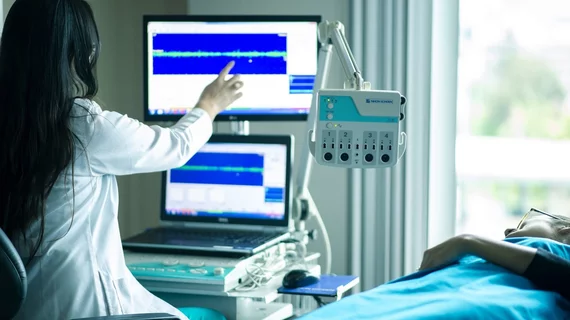Sepsis found to fit into 4 subtypes—and each may be uniquely treatable
Contrary to common understanding, sepsis is not a one-size-afflicts-all condition. It’s a set of many, and each can be placed into one of four key subcategories—i.e., phenotypes—such that, going forward, stricken patients could receive tailored treatments.
That’s according to researchers at the University of Pittsburgh Medical Center (UPMC) who used machine learning to help analyze clinical variables in the medical records of nearly 64,000 patients with sepsis.
The investigation showed that that different demographics, lab test variables and patterns of organ dysfunction correlated with various sepsis biomarkers as well as with sepsis-related deaths.
JAMA published their full findings online May 19.
Christopher Seymour, MD, MSc, and colleagues first applied statistical, machine learning and simulation tools to identify relationships among and between 29 clinical features in the health records of around 20,000 hospital patients with sepsis.
The algorithm brought back four types of sepsis into which all patients could be sub-batched.
The most common sepsis, which the researchers named Alpha, represented 33% of the studied sepsis population. Patients in this phenotype had the fewest abnormal labs, the least organ disruption and the lowest rate of death (2%).
Next came the cohort they called Beta, at 27%. These patients tended to be older, and they had the highest rate of preexisting chronic illnesses and kidney dysfunction.
The Gamma cohort, about the same size as the Beta, had all its characteristics plus elevated rates of inflammation and lung dysfunction.
The cohort the researchers dubbed Delta made up only 13% of the total but had the highest rates of in-hospital death, at 32%. These patients often had liver dysfunction and septic shock.
Seymour and team validated the findings on another 43,000 sepsis patients who were in the hospital in a different time window.
Finally they retrospectively applied their sepsis phenotyping to several recent clinical trials for sepsis treatments, all of which had proven disappointing.
Here they found the results of those trials may have been more promising than initially believed if only the investigators had known about the four sepsis phenotypes.
Some of the patients, for example, would have fit into the Alpha group and so may have benefited from a sepsis protocol called early goal-directed therapy, the authors suggested.
In a UPMC news item on the research, senior study author Derek Angus, MD, MPH, says the work ought to open the door to a kind of precision medicine for sepsis patients.
“Intuitively, this makes sense—you wouldn’t give all breast cancer patients the same treatment,” Angus says. “The next step is to do the same for sepsis that we have [done] for cancer—find therapies that apply to the specific types of sepsis and then design new clinical trials to test them.”
Sepsis is brought on when the body’s immune system turns against the body’s organs following an internal infection. Although it’s more commonly acquired outside of hospitals than within, no condition kills more hospitalized patients than sepsis, according to the CDC.
The UPMC research follows on the heels of a study at UC-San Francisco in which an algorithm bested several standard methods for finding sepsis early in the hospital.

